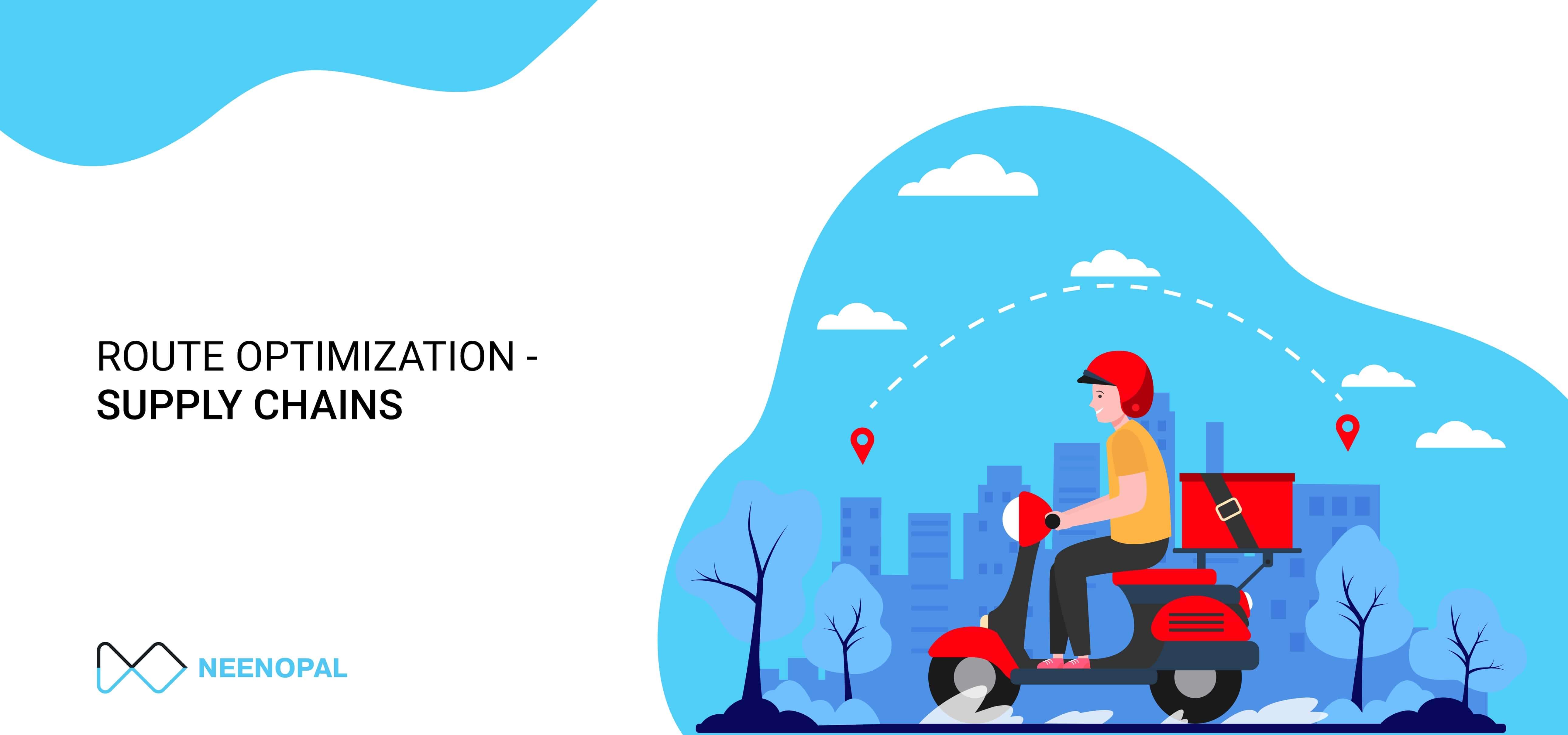Learn how we optimized the supply chain of one of the largest consumer goods companies in Sri Lanka using route optimization techniques
Maintain a cost-efficient and agile supply chain is important in almost all the industries. Minimizing spend on logistics and maximizing service levels & availability are key objectives of many companies. One of the main areas that many companies struggle with is optimizing routes. Put it simply – companies will typically have a network of warehouses, distributors, and retailers. Movement of goods happens from warehouses to distributors and retailers – route optimization addresses the problem of how to optimize this movement?
Although the problem seems simple at first, it gets complicated very rapidly when you add a large number of warehouses, retailers, distributors, routes, truck sizes, high expected service levels, and unpredictable ground-level scenarios. In this blog, I am going to explain what route optimization is and how we reduced logistics costs of one of the largest consumer goods companies in Sri Lanka using the same.
Before we start with the actual case study, let us first look at one of the most basic concepts in logistics – the Travelling Salesman Problem (TSP). Suppose you are a salesman and you want to visit your customers at different locations in a city in a day and return to your office at the end of the day. Naturally, you will try to visit the maximum possible customers, minimize traveling distance and time, and accordingly decide the best order to visit your customers. Although this problem may seem simple, it is complex nature – there are a lot of factors that one needs to consider to optimize the route in this case – like weather conditions, traffic and how it varies with time of the day, the time needed by a salesman at every customer, etc. The issue becomes more complex when we try to solve for multiple salesmen and different geographical locations. Only by collecting a lot of data and applying advanced machine learning algorithms can such problems be truly optimized.
If you replace salesman with vehicles carrying goods from warehouses to distributors, dealers, and retailers, we arrive at a modified version of the TSP called Vehicle Routing Problem (VRP). Solving a complex VRP manually is time-consuming and ineffective. You cannot manually assess all the routing permutations and combinations and then find it out the optimal solutions – it is impossible. Traditionally, companies used different VRP-solving mathematical algorithms. Advancement in machine learning techniques paves the way for a more sophisticated and accurate solution to VRP.
Now that we have covered the basics, let us now look at how we solved the VRP for one of the largest consumer goods companies in Sri Lanka –
About Our Client
Our client is one of the oldest and biggest electronics & home appliances consumer goods & retail chains in Sri Lanka. They have their proprietary brands and also sell products from other brands. They have warehouses spread across Sri Lanka. Further, they have many owned stores and a large number of distributors, dealers, and third-party retailers across the country. They are present in more than 10 product lines and sell products of more than 10 brands, including their proprietary brand.
The Process
The client has multiple warehouses across various geographical locations in the country. Distributors, dealers, retailers, and their owned stores place their orders to these warehouses. The orders, once ready, are dispatched from the warehouses in trucks and are delivered across distributors, retailers, and owned stores.
The Challenge
- The earlier process that the client used to follow was inefficient. After receiving all the orders for the day, a warehouse manager would manually go through all the orders and make multiple decisions like-
- In case of unavailability or deficiency, which orders should be prioritized over others? (e.g. if 3 retailers order 10 items each of an SKU and the available inventory is only 5 items, then which order is fulfilled/ partially fulfilled and what quantity is allotted?)
- How to allocate orders to trucks? (i.e. which items should go in which trucks?) The objective here is to maximize truck utilization. Different truck sizes increased complexity.
- How to optimize routes of every truck? The objective here is to minimize logistics costs and delivery time
- Making such crucial decisions manually was inefficient and took a lot of time (around ~6 hours every day), resulting in a delayed dispatch. Further, full truck capacity utilization and logistics cost minimization were not possible using manual optimization techniques.
The Solution
Our approach was to first understand the issues and constraints faced by the client. We identified and mapped different data sources available and the quality of data from them. Using our years of hands-on experience in data analytics in logistics, we designed a solution addressing all the pain points of the client
- The solution was designed in the form of an online portal that the client could directly use for managing logistics operations on a day-to-day basis
- Once an order is placed by a retailer or a distributor, the order details (SKUs, delivery location, quantity, etc.) are automatically uploaded to the portal
- At the start of the day, the client logistics manager enters the number and type of available trucks (the standard truck types and sizes are built-in the portal) and clicks on the ‘optimize routes’ button. With just a single click, the portal provides the optimized solution
- Which trucks to use, which SKUs & quantity should be loaded to which trucks, which routes should be taken by each truck, etc.
- Once the logistics manager approves the solution provided by the system, the portal automatically places orders with the logistics provider and informs the warehouses of the truck loading allocation.
Handing Complex Scenarios
Many complex scenarios arise with a large number of products and stakeholders. One such scenario is explained here. Suppose two retailers ‘R1’ and ‘R2’ and one distributor ‘D1’ each places an order of 10 units of the same SKU with the client. The problem is that only 20 units of that SKU are available in the warehouse. The question is – how much quantity should be sent to R1, R2, and D1? We designed a ‘smart allocation’ algorithm to solve this problem. Our solution considers a variety of factors like past order history of R1, R2, and D1 (general history and SKU-wise history as well), the priority of order to come up with an optimal allocation of the available inventory.
Benefits
The key benefits of such a route optimization solution are:
- Zero dependencies on manual work and hence error-free and accurate optimization possible
- Savings in time (before the portal – 6 hours every day, after the portal – just one click)
- Increased truck space optimization and loading efficiency
- Savings in logistics cost
- Increased service levels
Do you also want to leverage the potential of data analytics to solve business problems and drive growth? Contact us today at Corporate@neenopal.com





